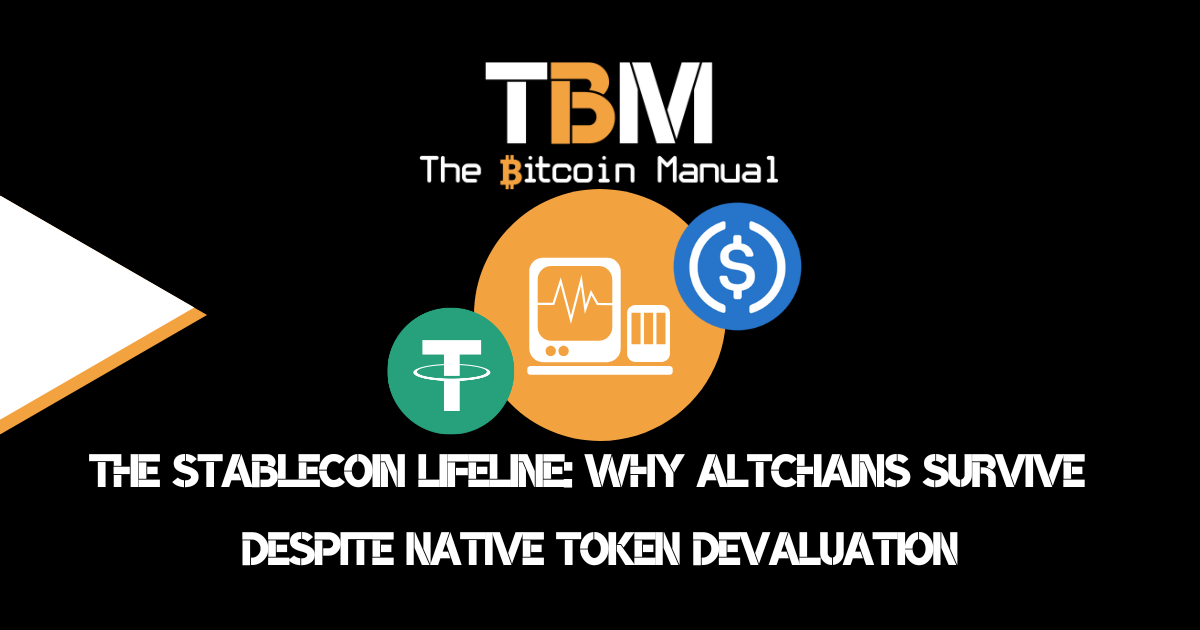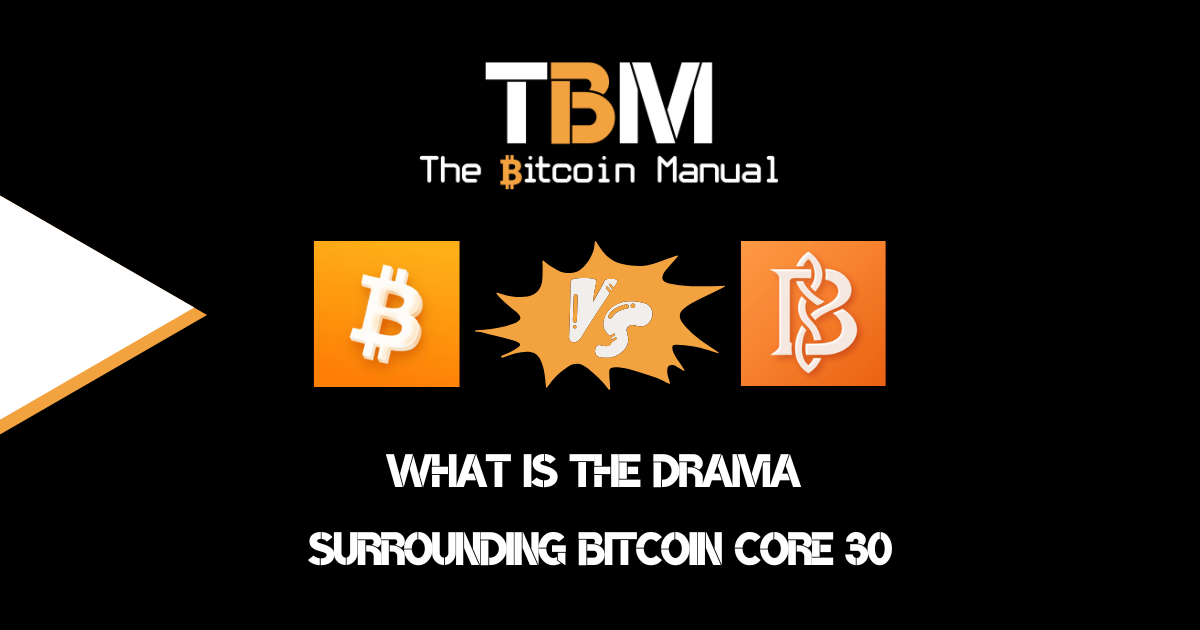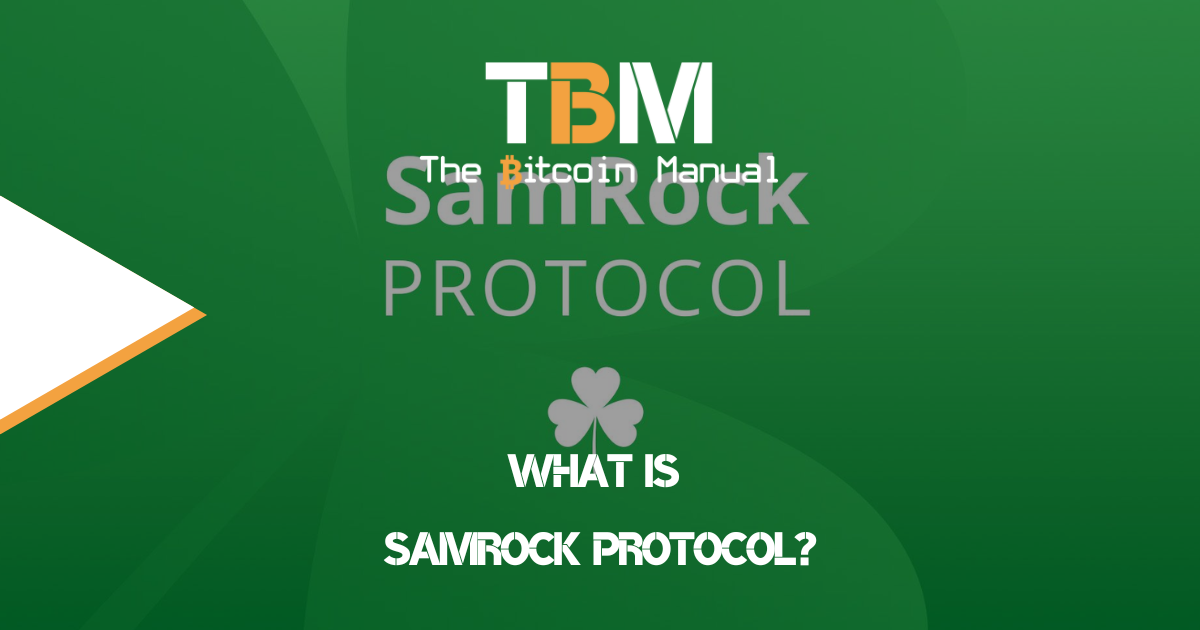Why Altchains Will Survive Despite Native Token Devaluation
The altcoin landscape has changed compared to previous cycles, despite many a bag holder still clinging onto hope that altcoin season is delayed, each passing month sees Bitcoin continue to assert its dominance as the ultimate store of value.
At the same time, alternative blockchain networks face an existential paradox: Their native tokens may continue losing ground to Bitcoin, yet the chains themselves will likely survive —thanks to stablecoins and cross-chain infrastructure.
The altcoin chain space has exhausted many of its narratives, including world computer, ultra sound money, being technically superior to Bitcoin, NFT and RWA asset creation, algorithmic stablecoins, DEFI, and the list goes on.
They’ve always found something to falsely promise, but this cycle, it seems that the only play is to buy our token to pay for fees so you can move stablecoins.
This is not a bad value proposition, but it’s not one that will generate considerable demand for the native token, since you’ll only buy as much as you need to cover fees.
So, where to from here? Where are the “pumpamentals” going to come from?
The Native Token Dilemma
Alternative blockchain networks like Ethereum, Solana, and TRON have built impressive ecosystems with stablecoin utility. The account-based model is easy to use and understand; their re-usable addresses are handy for day-to-day transactions, giving users an experience they understand.
While the low fees and open access make them a dream for those in non-dollarised countries.
While Americans want to get out of dollars into dollar-based assets, there’s an entire third world out there with Temu dollars, pieces of plastic made in China, crap currencies and to them, stablecoins are miles better as a store of value and medium of exchange.
The stablecoin market continues to grow, adding $40 billion to its total market cap in 2025, now standing at $263 billion, with calls that it could mature into a $2 trillion market.
Despite the overall growth, the rails on which stablecoins run have not had a similar growth curve. Smart contract chains require their native token to pay for stablecoin transactions, but their native tokens face mounting pressure against Bitcoin’s superior monetary properties. Bitcoin’s fixed supply, network effects, and institutional adoption create a gravitational pull that’s increasingly difficult for other cryptocurrencies to resist.
This doesn’t mean these networks are doomed.
Instead, it signals a maturation where blockchain utility becomes divorced from native token speculation. The real value lies not in holding ETH, SOL, or MATIC long-term, but in leveraging these networks for what they do best: facilitating fast, programmable transactions and hosting decentralised applications.
Since it’s something the market clearly wants, and Bitcoin cannot offer….YET!

Stablecoins: The Real Growth Engine
The explosive growth of stablecoins represents the most practical use case for smart contract platforms. USDC, USDT, and other dollar-pegged tokens have found their natural home on networks that can handle high transaction volumes with programmable functionality.
These stablecoins serve as the circulatory system of decentralised finance, enabling everything from lending protocols to automated market makers.
What makes stablecoins particularly valuable is their ability to provide dollar-denominated stability while providing open access via these blockchain networks. This combination is something traditional banking simply cannot offer, creating genuine demand that transcends speculative trading.
While first-world market users might use stablecoins for speculative endeavours, the third world sees stablecoins as an alternative medium of exchange and “offshore” store of value.
The Bitcoin Gap: Why Liquid and Taproot Assets Haven’t Captured Market Share
Tether has attempted to deploy its stablecoin in the Bitcoin ecosystem with its first iterations using Omni Layer and even OMNI-bolt that used Lightning.
Still, both of those implementations have bit the dust.
The last remaining vestige of USDT in Bitcoin remains on the Liquid Network, holding 97 million issued tokens or 0.06% of the total supply.
Tether is also working on deploying USDT on the Lightning Network via Taproot Assets as Bitcoin-native alternatives to stablecoins on other chains. While they are technically feasible, they face significant adoption headwinds:
- Limited Developer Ecosystem: Unlike Ethereum’s robust development environment, Bitcoin Layer 2 solutions have smaller developer communities and fewer tools. This creates a chicken-and-egg problem where applications are scarce because developers are scarce, and vice versa.
- Bitcoin Maximalism: Many in the Bitcoin community view stablecoins as a shitcoin and would rather avoid adoption of it, and push for Bitcoin native payments instead.
- User Experience Challenges: Moving assets to Liquid or utilising Taproot Assets requires technical knowledge that most users lack. The friction involved in accessing these systems remains considerably higher than simply using USDC on Ethereum or Polygon.
- Network Effects: Stablecoin issuers like Circle and Tether have already established themselves on EVM-compatible chains. Moving to Bitcoin-native solutions would require rebuilding these network effects from scratch—a formidable challenge.
If USDT and USDC were to increase their issuance on Bitcoin side chains like Liquid, Rootstock, or Taproot assets, it would compel exchanges and wallets to support these networks, thereby reducing demand for altcoins.
Since users would use Bitcoin as the method of payment instead.
While unlikely, given the level of adoption on Ethereum and TRON, we have seen certain chains lose their stablecoin privileges.
The Chain Competition Reality
The discontinuation of USDT support on chains like Bitcoin Cash SLP, Kusama, EOS (now Vaulta), and Algorand illustrates a harsh reality: smart contract platforms have no inherent moat.
Stablecoin issuers will deploy on networks that offer the best combination of security, speed, cost, and user base. This creates intense competition among chains to attract and retain stablecoin volume.
Networks like Ethereum maintain their position through established ecosystems and developer mindshare, while newer chains like Solana and Avalanche compete on transaction speed and cost.
However, this competition is ultimately healthy—it drives innovation and ensures users get better services over time.
Cross-Chain Swaps: The Infrastructure Layer
Given the fact that stablecoin issuance is fragmented across different chains, and users and service providers might find themselves on opposite ends, there needs to be interoperability.
If I am a user with USDC on Ethereum, how do I pay someone who wants USDT on TRON? The honest answer is, you can’t!
Each person is siloed by their choice of stablecoin and chain of issuance, and to solve this pain point, the cross-chain swap market has come into play.
Cross-chain swap protocols serve as the connective tissue between different blockchain ecosystems. While others view these tools as ways to arbitrage between different tokens, their primary function is far more utilitarian:
- Stablecoin Arbitrage: Moving between USDC and USDT across different chains to access better yields or services. This isn’t speculation—it’s efficiency-seeking behaviour.
- Service Provider Access: Accessing decentralised applications or services that only exist on specific chains. A user might need to move USDC from Ethereum to Solana to access a particular DeFi protocol.
- Fee Optimisation: Migrating funds to lower-cost chains during periods of high network congestion, then moving back when conditions improve.
- Bitcoin Exit Ramps: Perhaps most importantly, these protocols provide efficient pathways to convert stablecoin holdings back to Bitcoin when users want to exit the crypto economy or store value long-term.
The Economic Reality
The way this ecosystem develops also allows stablecoin issuers the chance to step back and let the market decide where liquidity will flow. As an example, TRON is the largest issuer of USDT, with a total issuance of $81 billion. However, with cross-chain markets, issuers can track capital flows and issue on other chains based on demand.
- Chains survive by providing utility for stablecoin transactions and DeFi applications, low fees and merchant adoption.
- Liquidty Pools help chains tap into each other’s stablecoin markets and provide arbitrage opportunities for traders
- Users benefit from fast, cheap transactions and access to financial services
- Stablecoin issuers profit from the float and transaction fees
- Bitcoin holders can easily access this ecosystem when needed while maintaining their core position
The key insight is that holding native tokens of these alternative chains isn’t necessary to benefit from their utility. Users can hold Bitcoin as their primary store of value while using stablecoins to access services on various chains as and when they are needed via the growing cross-chain swap market.
The Altcoin Hopium
Does this mean there won’t be some altcoin mania in the later stage of this cycle?
No!
There’s always a cohort of retail laggards coming in with more money than brains and an appetite to get rekt.
When Bitcoin breaks new all-time highs, far beyond fundamentals, it will encourage more risk-taking and bidding up of altcoins, bids that might push alts above previous all-time highs in dollar terms, but as for Satoshi terms, that ship has long since sailed.
If you held altcoins for any meaningful period, you’re down badly in Bitcoin terms.

The Stablecoin Standard
Given the global appetite for stablecoins and the issuers’ ability to convert demand into US debt purchases, there’s no reason to believe this growth will stop. Stablecoins enable the US to export dollar demand, expanding its EURODOLLAR market into markets that are starved for liquidity and desperate to escape local fiat currency capitulation.
It’s the dollar milkshake theory of natural evolution.
The future likely holds continued growth in stablecoin adoption and cross-chain infrastructure, even as native altcoin tokens struggle against Bitcoin’s monetary supremacy.
Smart contract platforms will increasingly compete on providing the best infrastructure for stablecoin applications and a mesh network for moving US dollar-based value outside the US.
Where that value goes, in the medium term, will be trading and medium of exchange for goods and services, but US dollars, blockchain-based or not, will lose purchasing power over time.
The loss of purchasing power will lead some of that stablecoin value to transition to something better.
Eventually, all roads lead to Bitcoin!
It’s your choice whether to skip the tutorial and bypass the queue of future demand for Satoshis!




